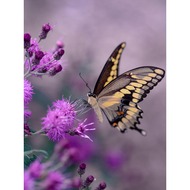
(View Complete Item Description)
SYNOPSIS: In this lesson, students learn where food comes from and the importance of taking care of natural resources.
SCIENTIST NOTES: Soil, air, light, water, and other natural components aid plant growth. When they are perturbed or polluted, it influences plant growth and makes food unhealthy for human and animal consumption. This lesson underscores the correlation between natural resources and food production. It shows students what is required for agricultural production and how they can locate food sources in their local environment. The lesson also provides basic understanding on how the natural resources could be protected from harmful human activities. The materials embedded in the lesson were fact-checked, and this lesson has passed our credibility review process.
POSITIVES:
-This lesson is a great way for students to understand and appreciate the care that goes into growing food.
-Students will get to share their families' food traditions with others.
-Students will feel empowered to help protect natural resources.
-Students will share their new knowledge with others.
ADDITIONAL PREREQUISITES:
-You will need a fruit or vegetable for the beginning of the Inquire section.
-You will need to acquire a copy of Right This Very Minute by Lisl Detlefsen before class begins. You can check your local or school library for a copy of the book.
-You will need to enter an email address to access the PDF lesson plan of Who Polluted the River? the first time you use the Population Education website.
-You will need the following materials for the Who Polluted the River? activity:
-Clear gallon jar or bowl of water
-Small lidded containers
-Printed container labels (printable templates included)
-Printed character name tags (printable templates included)
-Slotted spoon
-Plastic toy fish
-Dry leaves
-Soil
-Baking soda
-Shreds of paper
-Fishing line or dental floss
-Instant coffee
-Water
-Vegetable oil
-Dishwashing soap
-Red and green food coloring
DIFFERENTIATION:
-You can break this lesson up and teach Inquire, Investigate, and Inspire on three separate days.
-The Student Document is provided in four levels.
-Fluent writers can write one or more paragraphs to accompany their informative piece.
-You can go over the Vocabulary Cards at the beginning of the lesson or print the Vocabulary Cards and make a word wall to reference throughout the lesson.
Material Type:
Lesson Plan
Author:
Dena James


















